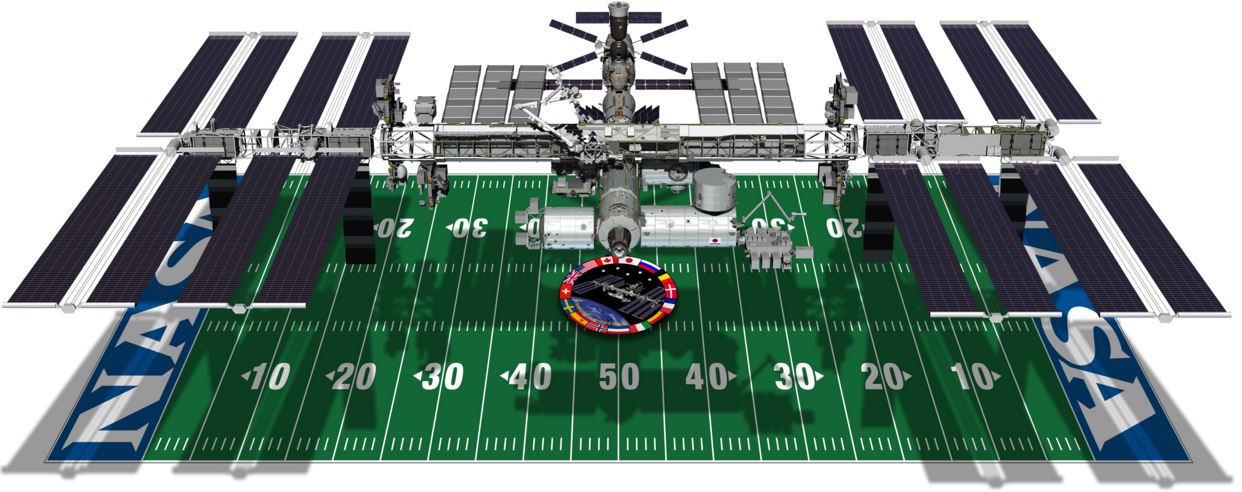The ISS (International Space Station) comes with a one hundred billion euro price tag – this includes all development, assembly and running costs. Does that sound like a lot of money? According to the European Space Agency (ESA), it gives a fantastic return on investment.
State-of-the-art technology, especially space tech, does not come cheap, and it is not as if just one country or region is carrying the whole burden – it is shared.
The Governments, i.e. space agencies, of Japan (JAXA), Russia (Roscosmos), the US (NASA), Europe (ESA) and Canada (CSA) are all partners in the International Space Station project.
 According to NASA “More than an acre of solar arrays provide power to the station, and also make it the next brightest object in the night sky after the moon.”
According to NASA “More than an acre of solar arrays provide power to the station, and also make it the next brightest object in the night sky after the moon.”
Just one euro per person
Over the lifetime of the whole project – thirty years – the European Space Agency is only liable for approximately €8 billion of the total amount, says ESA, which it says works out at just one euro per European citizen per year.
ESA gets funds from 22 European nations.
For just one Euro per person, we have been able to develop, assemble and maintain the station for cutting-edge research for over one decade.
The European Space Station said, regarding the one Euro per citizen:
“All this while generating high-tech jobs in European industry and research institutions, contributing to the build-up of Europe as a peaceful knowledge and information society, and to the greatest international cooperative project ever undertaken.”
The 22 ESA member states are: Austria, Belgium, Czech Republic, Denmark, Estonia, Finland, France, Germany, Greece, Hungary, Ireland, Italy, Luxembourg, the Netherlands, Norway, Poland, Portugal, Romania, Spain, Sweden, Switzerland and the United Kingdom. Canada takes part in some projects under a Cooperation agreement.
 The International Space Station’s length and width is about the size of a football field. (Image: NASA)
The International Space Station’s length and width is about the size of a football field. (Image: NASA)
ESA employs about 2,200 people, all from member states, and include information technology specialists, engineers, scientists, and administrative personnel.
Where does ESA’s income come from?
ESA’s mandatory activities – the general budget and space science programmes – are funded by contributions from all the agency’s member states.
How much each country contributes depends on the size of its GNP (gross national product).
ESA also conducts several other optional programme. Each member state is free to decide which of these programmes it wants to be part of.
How much does ESA spend?
In 2013, ESA’s budget totaled €4.020 billion. It operates on the basis of geographical return, i.e. it invests in each contributing country, through industrial contracts for space programmes – the amount is about the same as that country’s contribution.
Video – New crew docks to the ISS December 2015

